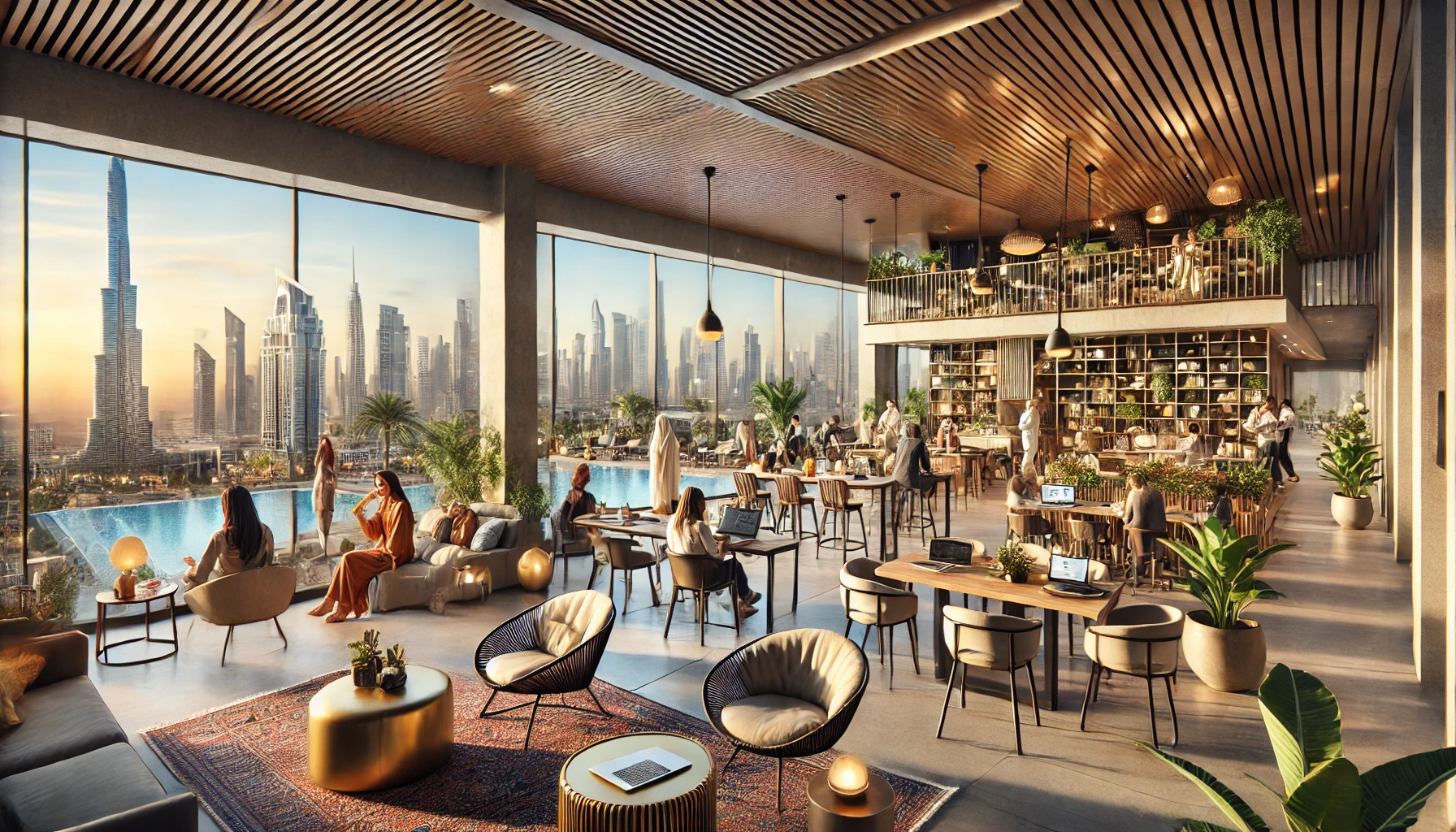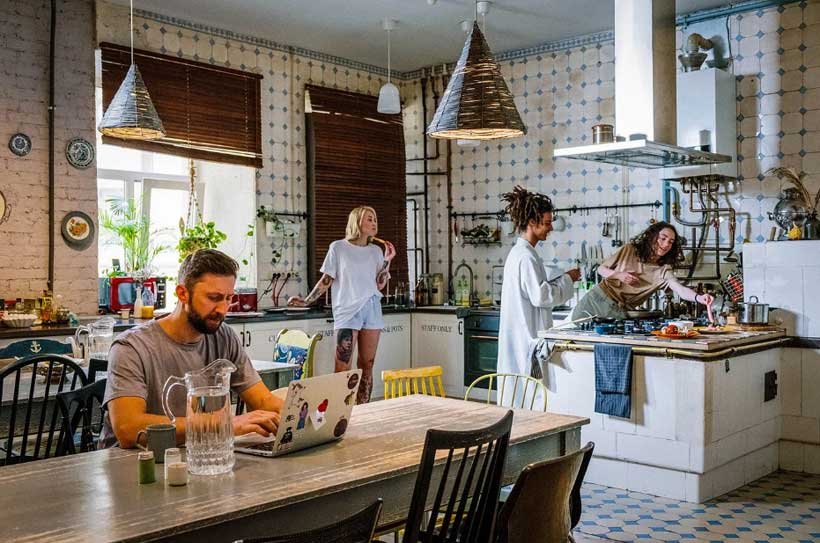
Dubai’s rental market is evolving at a rapid pace, and one trend that’s making waves across the city is co-living spaces. Once popular in global cities like London, Singapore, and New York, this concept has now found a strong footing in Dubai. As rental costs rise and young professionals flock to the emirate, the demand for affordable yet stylish shared accommodation has surged.
Co-living is no longer seen as a temporary solution; it’s becoming a lifestyle choice. With flexible lease terms, all-inclusive amenities, and a strong sense of community, co-living offers an appealing alternative to traditional apartments.
At its core, co-living means sharing living spaces with others while maintaining personal privacy. Residents typically rent private bedrooms while sharing communal areas such as kitchens, lounges, and recreational zones.
These spaces often come fully furnished, making it easier for newcomers or digital nomads to settle in without the hassle of setting up a home from scratch. Co-living developments in Dubai emphasize convenience, flexibility, and social engagement, creating a modern housing solution tailored to the city’s fast-paced lifestyle.
There are several factors fueling the rise of co-living in Dubai:
This combination of practicality and lifestyle appeal has made co-living an attractive option for millennials, expatriates, and digital nomads seeking an urban home with a community vibe.

Dubai’s property developers and startups have tapped into the trend, transforming traditional housing concepts into community-driven experiences. From chic studios in Jumeirah Village Circle to dynamic shared hubs in Business Bay, co-living communities now cater to a range of tastes and budgets.
Popular examples include flexible residential buildings that feature:
These developments go beyond accommodation—they create an ecosystem where residents can live, work, and socialize in one integrated environment.
The tenant profile in Dubai is shifting. Younger generations prioritize experience and community over ownership. Millennials and Gen Z residents are driving this transformation, valuing social interaction, sustainability, and convenience more than traditional housing models.
Additionally, the city’s expanding startup scene and growing number of remote workers have fueled demand for flexible living arrangements. Co-living fits perfectly into this landscape, offering mobility and comfort without long-term commitment.
Real estate developers have quickly recognized the potential of co-living as a profitable and sustainable segment. Many are reimagining residential projects to incorporate shared facilities and communal spaces that encourage interaction.
For instance, some developers have introduced hybrid models that combine co-living with co-working—providing dedicated office spaces within residential complexes. This appeals to entrepreneurs, freelancers, and digital workers who seek convenience and community under one roof.
Moreover, operators are focusing on design-driven interiors, smart home features, and environmentally conscious amenities to attract Dubai’s modern tenants who value aesthetics and innovation.
Beyond lifestyle, co-living also makes financial sense—for both tenants and investors.
With rising property prices and changing rental dynamics, co-living stands out as a scalable solution that aligns with Dubai’s vision for sustainable urban growth.

Several districts have become hotspots for co-living developments due to their accessibility, affordability, and vibrant atmosphere:
These neighborhoods offer a balance between modern facilities, transport access, and lifestyle appeal, making them the top choices for co-living residents.
One of the biggest selling points of co-living is community. Living among like-minded individuals creates an atmosphere of collaboration and support.
Residents often participate in shared experiences—group dinners, cultural events, or fitness sessions—that go beyond the walls of an apartment. This helps foster a sense of belonging in a city that’s home to people from over 200 nationalities.
In many ways, co-living represents a return to human connection in an increasingly digital age. It’s not just about affordable rent—it’s about building relationships and finding balance.
As Dubai continues to push its sustainability agenda, co-living aligns perfectly with these values. Shared resources mean reduced energy consumption, less waste, and optimized space utilization.
Many co-living projects also integrate green design principles such as:
This commitment to sustainability resonates with environmentally conscious residents who want to live responsibly while enjoying modern comforts.
Tech integration has made co-living seamless and efficient. From digital lease management to app-based maintenance requests, technology simplifies every step of the process.
Residents can use dedicated mobile platforms to:
Smart home features also enhance convenience, offering secure access control and automation that appeal to Dubai’s tech-savvy demographic.
While the co-living concept brings immense benefits, it’s not without challenges. Privacy concerns, cultural differences, and noise levels can sometimes affect the experience. Operators must ensure clear house rules, soundproof designs, and inclusive policies to maintain harmony among residents.
Additionally, as the market matures, regulations around co-living properties need to evolve to protect both tenants and landlords, ensuring fair practices and long-term sustainability.
The future looks bright for co-living in Dubai. With continued urban development, shifting lifestyle preferences, and increasing digital mobility, co-living will likely expand into new forms—such as family-oriented communities or luxury co-living experiences.
Dubai’s ambition to become a global innovation hub aligns perfectly with this model. The combination of affordable luxury, flexibility, and social connection makes co-living not just a housing trend but a cultural shift.
As more residents embrace this lifestyle, the concept will reshape how people view renting in one of the world’s most dynamic cities.
If you’re considering joining a co-living community, here are a few tips to make the most of the experience:
Co-living spaces are redefining the way people live, connect, and thrive in Dubai. They offer more than just a roof over your head—they provide a lifestyle of convenience, connection, and creativity.
As Dubai continues to grow as a global hub for innovation and opportunity, co-living will play a vital role in shaping its housing future. It’s affordable yet aspirational, modern yet community-driven—a perfect fit for the city’s ever-evolving spirit.
Do Follow Estate Magazine on Instagram
